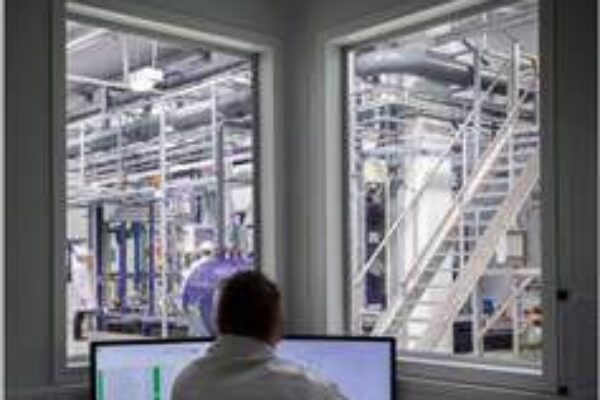
Silicon anode technology gears up for production volumes
The versatile plant is capable of producing over 20 tonnes of product a year, and has been built to be able to handle a wide range of materials and reagents.
In addition to the manufacturing capability, the new facility includes integrated laboratories for Process Development and Material Characterisation. The plant is certified to ISO9001 and ISO14001, and includes a Quality Assurance lab to ensure consistent quality of customer materials. End use applications planned include hybrid and electric vehicles and consumer electronic devices.
In keeping with the plant’s process development role, a fully flexible modular process design has been deployed throughout, and both conventional and novel reactor designs have been implemented. The project, which started in late 2012, has involved sourcing equipment from major suppliers in Germany, Switzerland, France and the UK.
“This first class facility puts us in a very strong position to produce new materials for Li-ion cells, and to optimize the production processes that will be necessary for their commercial adoption”, said David Bent, Production Director at Nexeon. “We now have the key engineering resources we need on-board, and eagerly look forward to sampling customers with products made in our new facility.”
Nexeon’s silicon anodes claim to enable significantly greater Li-ion battery capacity to be achieved, providing lighter batteries with more power and longer lifetime between charges.
The company’s fully automated and instrumented pilot plant is currently in full operation, capable of producing more than 1 kg of material a day (enough material for approximately 500 x 18650 cells).
Tests have shown that low first cycle loss and extended cycle life can be achieved using Nexeon’s silicon anode materials at a lower cost than graphite for a given capacity.
Nexeon’s Dr Bill Macklin has also co-authored a paper on nanostructured materials and their use as lithium-ion battery electrodes. His co-authors on the paper were Drs Armstrong, O’Dwyer and Holmes from the Materials Chemistry & Analysis Group and the Applied Nanoscience Group, University College Cork, and the Centre for Research on Adaptive Nanostructures and Nanodevices (CRANN), Trinity College Dublin. The work was supported by Science Foundation Ireland.
The paper highlights a number of gains in the development of nanostructured lithium-ion battery architectures (both anode and cathode) as drivers of potential next-generation electrochemical energy storage devices.
Related articles and links:
www.nexeon.co.uk
News articles:
Nexeon’s battery technology claims double triumph at environmental awards
Startup ready to license silicon anode for battery
 If you enjoyed this article, you will like the following ones: don't miss them by subscribing to :
eeNews on Google News
If you enjoyed this article, you will like the following ones: don't miss them by subscribing to :
eeNews on Google News



